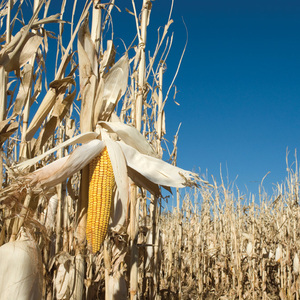USDA maintains forecast for 2022-'23 corn use in ethanol

April 11, 2023
BY Erin Krueger
The USDA maintained its forecast for 2022-’23 corn use in ethanol production in its latest World Agricultural Supply and Demand Estimates report, released April 11. The current 2022-’23 corn outlook is for reduced imports and reduced food, seed and industrial (FIS) use. The forecast for ending stocks is unchanged.
The USDA lowered its forecast for corn imports by 10 million bushels based on observed trade to date. Feed and industrial use is unchanged at 5.275 billion bushels based on indicated disappearance during the December-February quarter. FSI is lowered 10 million bushels reflecting cuts to corn used for glucose and dextrose and starch.
Advertisement
The agency has maintained its forecast that 5.25 billion bushels of corn will go to fuel ethanol production for 2022-’23, down from 5.326 billion bushels in 2021-’22, but up from 5.028 billion bushels for 2020-’21.
With supply and use falling by the same amount, ending stocks are unchanged at 1.342 billion bushels. The season-average farm price is unchanged at $6.60 per bushel.
Foreign corn production is forecast down as cuts for Argentina, the European Union, Servia and Uruguay are partially offset by an increase for Russia. For Argentina, production is lowered as continued heat during March diminishes yield prospects for late-planted corn, despite locally beneficial precipitation during the month. EU corn production is reduced, mostly reflecting declines for Hungary, Italy, and Bulgaria that are partly offset by increases for Germany and Poland. Russia corn production is higher reflecting increases to both area and yield.
Advertisement
Major global trade changes include lower forecast corn exports for Argentina, Mexico, Burma and Serbia, with increases for Ukraine and Russia. Corn imports are lowered for Egypt, the U.S., Thailand and Venezuela, but raised for the EU, Turkey and Uruguay. Foreign corn ending stocks are lower mostly reflecting declines for Ukraine, the EU, Mexico and Servia that are partly offset by increase for Russia and Brazil. Global corn ending stocks, at 295.3 million tons, are down 1.1 million from last month.
Related Stories
The U.S. EPA on July 8 hosted virtual public hearing to gather input on the agency’s recently released proposed rule to set 2026 and 2027 RFS RVOs. Members of the biofuel industry were among those to offer testimony during the event.
The USDA’s Risk Management Agency is implementing multiple changes to the Camelina pilot insurance program for the 2026 and succeeding crop years. The changes will expand coverage options and provide greater flexibility for producers.
The USDA’s National Agricultural Statistics Service on June 30 released its annual Acreage report, estimating that 83.4 million acres of soybeans have been planted in the U.S. this year, down 4% when compared to 2024.
SAF Magazine and the Commercial Aviation Alternative Fuels Initiative announced the preliminary agenda for the North American SAF Conference and Expo, being held Sept. 22-24 at the Minneapolis Convention Center in Minneapolis, Minnesota.
Scientists at ORNL have developed a first-ever method of detecting ribonucleic acid, or RNA, inside plant cells using a technique that results in a visible fluorescent signal. The technology could help develop hardier bioenergy and food crops.
Upcoming Events










